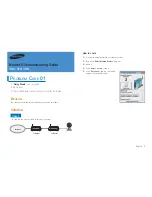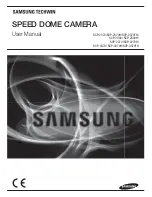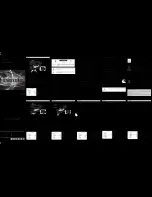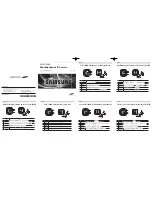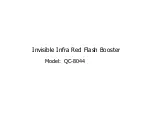
EN
232
Preca
ut
io
ns
a
nd
ca
re
in
str
uc
tio
ns
CARE INSTRUCTIONS
As any soiling also represents a growth medium for
microorganisms, you should take care to keep the equipment
clean.
FOR THE CAMERA
• Only clean the camera with a soft, dry cloth. Stubborn dirt
should first of all be covered with a well-thinned cleaning agent
and then wiped off with a dry cloth.
• To remove stains and fingerprints, the camera and lens should
be wiped with a clean lint-free cloth. Tougher dirt in hard to
reach corners of the camera body can be removed with a small
brush. The shutter blades may not be touched when doing this.
• All mechanically operated bearings and sliding surfaces on your
camera are lubricated. Please remember this if you will not be
using the camera for a long period of time. To prevent the
lubrication points becoming gummed up, the camera shutter
should be released a number of times every three months. It is
also recommended that you repeatedly move and use all other
controls. The range and aperture setting dials on the lens should
also be moved periodically.
• Take care not to scratch the sensor for the 6-bit coding in the
bayonet fastening (see p. 147), or to get it dirty. Take care also
that no grains of sand or similar particles enter the fastening,
where they could scratch the bayonet. Only clean this
component when dry and do not exert any pressure on the glass
cover.
FOR LENSES
• Normally, a soft hair brush is sufficient to remove dust from the
outer lens elements. However, in case of more stubborn dirt,
they can be carefully cleaned with a very clean, soft cloth that is
completely free of foreign matter, using circular motions from
the inside to the outside. We recommend micro-fiber cloths
(available from photographic and optical specialists) that are
stored in a protective container and can be washed at
temperatures of up to 40°C (without fabric softener, never
iron!). Cloths for cleaning glasses, which are impregnated with
chemicals, should not be used as they can damage the lens
glass.
• Take care not to scratch the 6-bit coding (sj) in the bayonet
fastening, or to get it dirty. Take care also that no grains of sand
or similar particles enter the fastening, where they could scratch
the bayonet. Never wet this component when cleaning it!
• For optimum front lens protection in unfavorable photographic
conditions (e.g. sand, salt water spray), use transparent UVa
filters. However, you should bear in mind that, like all filters, they
can cause unwanted reflections in certain backlight situations
and with high contrasts. The generally recommended lens hood
also protects the lens from unintentional fingerprints and the
rain.
Содержание M 240
Страница 1: ...LEICA M M P Instructions ...
Страница 2: ...1 10 12 14 13 11 11b 19 20 16 17 17a 18 11c 15a 11a 15 2 3 4 5 2 8 9 6 7 ...
Страница 3: ...39 40 41 42 21 22 23 24 25 26 27 28 29 30 32 33 34 35 31 37 38 36 ...
Страница 4: ......
Страница 5: ...Leica M M P Instructions ...
Страница 16: ...EN 140 Preparations DETAILED GUIDE PREPARATIONS ATTACHING THE CARRYING STRAP ...
Страница 51: ...EN 175 Picture mode 50mm 75mm 28mm 90mm ...
Страница 116: ...EN 240 Viewfinder displays APPENDIX DISPLAYS IN THE VIEWFINDER 1 2 3 ...































